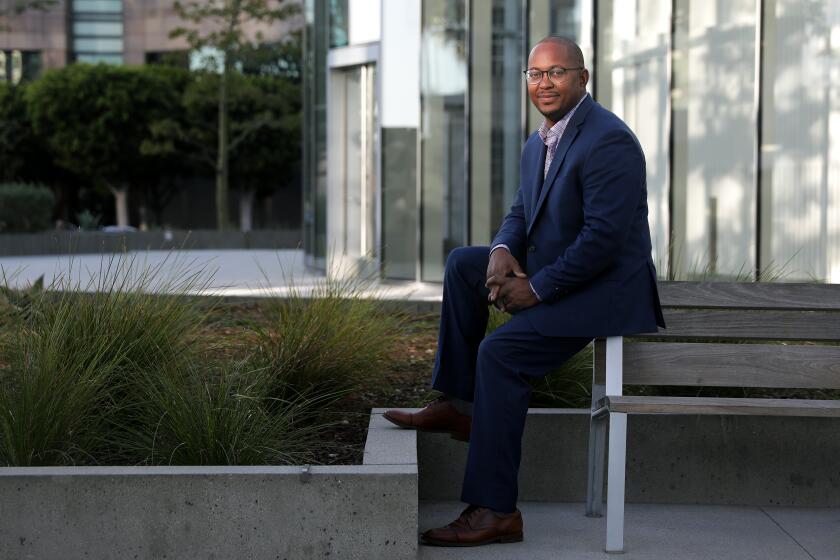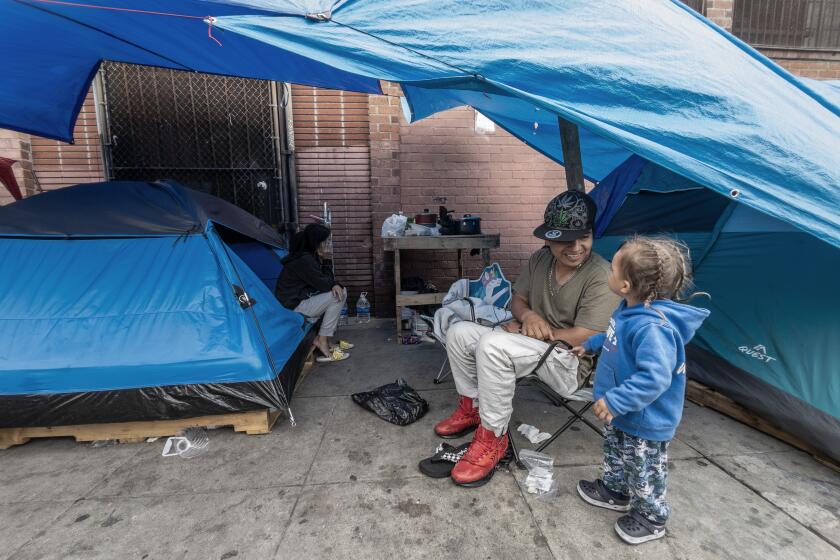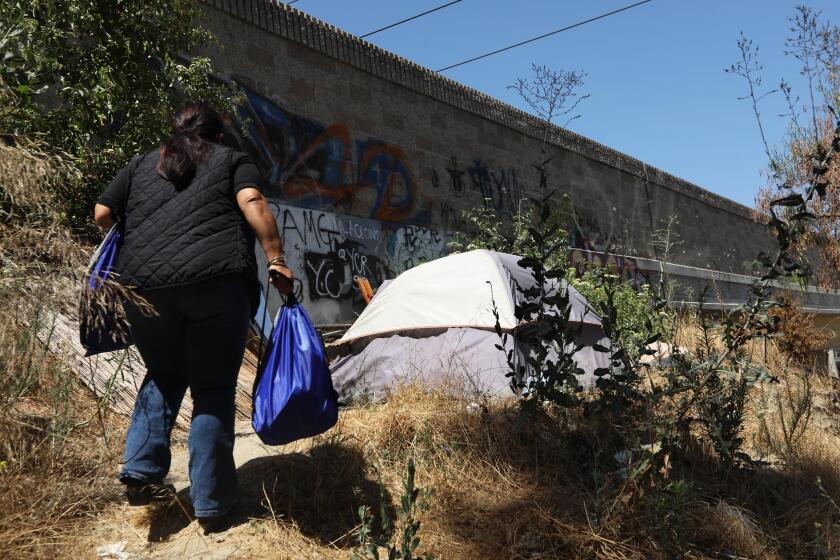Homelessness down in Long Beach, up in Orange County, latest counts find

For the first time in seven years, the city of Long Beach saw local homelessness decline year over year — but officials in next-door Orange County were disappointed to learn their unhoused population had continued to grow.
The divergent trends were documented in point-in-time counts conducted in January. Those surveys are meant to provide on-the-ground snapshots of homeless populations to help identify the needs of particular communities and shape local response efforts.
Long Beach officials said there were 3,376 people experiencing homelessness tallied during the latest count — down 2.1% from the 3,447 in 2023.
It was the first drop in homelessness seen since 2017, when the city’s homeless population stood at 1,863, records show.
The city leased the site to extend its winter shelter program, but community members asked leaders to purchase it for use as housing for homeless people.
Mayor Rex Richardson said he was encouraged by the results of the annual count, which is required by the U.S. Department of Housing and Urban Development for cities that have their own continuum of care, a governing body that coordinates funding for housing and homeless services. Long Beach, Glendale and Los Angeles each have their own continuum of care.
“It’s clear that the work the city has done in addressing homelessness is beginning to turn the tide,” Richardson said during a news conference this week. “These numbers let us know we’re on the right track and must continue on in the work.”
The homeless count found that more than 70% of people experiencing homelessness in Long Beach are unsheltered, meaning they live in a tent, makeshift shelters or a vehicle.
A little more than half of the people surveyed reported being on the streets for the first time. Most listed family issues, mental health and eviction as contributing factors.
In the last year, there has been a 45% increase in the number of families in L.A. County’s homeless system.
The city saw about a 50% reduction in homelessness for those between the ages of 18 and 24, a 37% decrease for minors and a 9.4% decline for those ages 54 through 64. Increases were seen in other age groups, however.
Declines were also recorded among women and Black and Latino residents — among the groups at highest risk of falling into homelessness.
City officials said an emergency declaration on homelessness issued last year helped boost outreach services, shelter bed capacity and mental health counseling. It also helped streamline the approval process for affordable housing projects — from a year to 60 days, officials said.
Although that emergency proclamation expired in February, city officials said it provided a model for how the city should tackle homelessness in the long run.
California awards L.A. County homelessness initiative $51.5 million to help house people living in encampments along the 105 Freeway corridor.
As a result, Deputy City Manager Teresa Chandler announced the formation of an Office of Homeless Strategy, which will serve as a “connecting point” for various departments, external agencies, service providers and community stakeholders who are focused on addressing homelessness.
Richardson said he hopes the city can maintain its momentum.
“We have to maintain focus,” he said. “Now is not the time to switch strategies, now is the time to double down on the results we’ve seen and continue to make meaningful difference.”
Meanwhile, just east of the port city, Orange County officials recorded a 28% increase in homelessness in the region.
The point-in-time results, conducted every other year by the county, showed that there were 7,322 people experiencing homelessness in January, up from 5,718 in January 2022.
As homelessness has exploded, Orange County officials have wrestled with how best to tackle it. Local governments are under pressure to do more.
Increases were noted both in the number of unsheltered homeless individuals, 37%, as well as those in shelters, 18%.
Doug Brecht, director of the county’s Office of Care Coordination, attributed the increase in part to the end of COVID-era initiatives that provided financial support to families and housing-related protections such as eviction moratoriums.
County officials took some solace in the fact that chronic homelessness decreased in the region for the first time since 2019 and that the growth rate of its homeless population over the last five years has remained below those of the state and surrounding counties — a development Brecht said was aided by more investment into the county’s homeless services system.
County officials said they plan to further increase shelter bed capacity, expand outreach services and build more affordable housing.
In a statement, Donald Wagner, chairman of the Orange County Board of Supervisors, expressed mixed reaction about the results.
“While there has been an increase in the homeless population in Orange County, it is only a relatively minor 7% increase over the last five years,” he said. “Still, we recognize much work left to do.”
From 2012 to 2021, the number of deaths of homeless people in Orange County more than tripled, and accidental overdoses are a leading reason why.
Supervisor Doug Chaffee expressed disappointment, but said the homeless count also provides vital information about how the county can do better.
“The point-in-time is not just counting heads, it’s an assessment of how well we’re doing,” he said. “It’s easy to say, ‘We need more housing.’ We do, but there’s other components.”
Chaffee said one area that the county will need to further examine is how to prevent people from falling into homelessness in the first place — while also trying to boost housing production in the region.
“It’s a cork in the bottle,” he said. “That’s how we’ll address the increase.”
More to Read
Sign up for Essential California
The most important California stories and recommendations in your inbox every morning.
You may occasionally receive promotional content from the Los Angeles Times.















